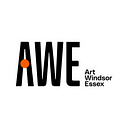In Conversation with Moment Factory: Part 1
Micaela Muldoon sat down with Olivier Maurice from Moment Factory, a Montréal-based multimedia studio, and our new digital media production partner. Read on to hear Micaela and Olivier talk about how Moment Factory defines an interactive project, and how the company makes the user the “art” of the experience!
MM: I’m Micaela Muldoon with the Art Gallery of Windsor and I’m here with Olivier Maurice from Moment Factory, a digital media company based in Montréal. Would you like to talk about your position a little bit please Olivier?
OM: I’m an executive producer from the interactive Moment Factory — it’s been, I think, four and a half years since I’ve been working at Moments so I’m happy to be there today.
MM: Excellent, we’re happy to have you here.
OM: Thank you.
MM: So the main topic that we’re going to be discussing today is interactive digital projects because that’s Moment Factory’s specialty. So we’ll start off with the first question centered around Moment Factory itself: what defines an interactive project at Moment Factory?
OM: Unlike a pre-rendered project, it is important to know that an interactive project puts the user as the “art” of the experience. So in order for them to feel impacted by the work that’s in front of them, we need to think about content that is not static in time but reacts directly to what is happening.
So we use real-time creation tools that allow us to go beyond the framework of just having a video with a beginning and an end. In this way we can create several possibilities in a scenario that can be triggered by the interaction of a user, so that’s really the important thing to remember of this interactive process — the user is the hero of the story and he needs to interact with it to discover his secrets.
MM: Excellent, thank you for your insight on that. So when you start planning one of these interactive projects where exactly do you start, like step one?
OM: There’s so much ground to cover when we start the project because an interactive project does not mean there’s only content — there’s also the narrative and the code behind it — but where do we start? It’s important to know that in an internet project it’s not just made by one person: it’s made by a team. So we need to sit down together at first and listen to each other’s realities because there are so many kinds of people who work at this interactive process — it could be designers, could be developers, could be concept writers — so we need to find the right balance to move forward as a team and to come up with prototypes. We usually start the project with a WBS session — this is a work breakdown structure — so, in short, we try to describe all the deliverables of our projects in as much detail as we can.
So every task is described in this WBS and it should be assigned to one single person so at the end it’s easier to say “okay, we’re going to start by doing this and this, and this is going to be attributed to this person,” so we can have a better track of what’s going on in order to see “okay, what are we going to start with?” We prioritize again as a team and we start to figure out how to make it happen, and that’s where the agile approach comes in as a way to do projects.
MM: Okay yes, so agile project management, that’s kind of adapting as you go through — like while you’re making the project and making the changes based on any feedback or any problems that you might encounter.
OM: Right, yeah exactly because it’s good to know that there’s like two main schools of management projects: there’s like the waterfall management and the agile one. In a waterfall process, it can work very well in its proper context. So let’s say we have a VFX project or we build a movie: so we usually start by just creating the mood board, the artistic direction we consider, the scenario we animate to get an idea of the work to come. We design the assets, the textures, we model, and we start to compose the scene. The problem is that even if there’s a small change at the end of the production, it costs in terms of production and in time. So if you want to reduce the speed of, say, the bird that’s passing through the screen, or if we want to reduce the size — even if we do one single change, we have to go through all the steps of compositing, re-rendering and then the days are starting to count — so it’s not necessarily the best process when we want to implicate the user in the art of this experience.
So in real-time, when we use, let’s say…Enzyme, Unity or Unreal, or other software like this, you can modify everything you want and the result comes in a few seconds. So that really helps to iterate and integrate and to see the process that we can achieve, so, when we start a project, we quickly try to test what we don’t know and which may lead to the problem. So the motto for management is “follow-through but fail fast”, so the goal is we can fail sometimes but at least we fail fast. In a week, we can see “okay, that’s the problem we’re going to iterate about it”, and it allows us to find solutions for important problems. We don’t have the luxury of waiting so we don’t start with what we know, we start with what we don’t know.
Keep an eye out: our project with Moment Factory will bring the artworks from our Look Again Outside! initiative to life in March of 2022!
